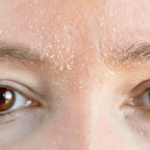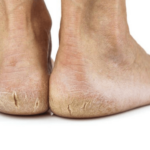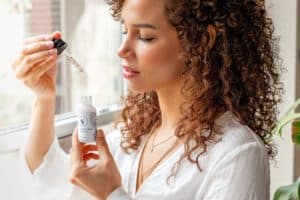Are you in your 40s or 50s and are wondering how to improve your skin? Are you wondering what specific anti-aging product you should focus on or how much you should spend on your skincare products?
How about what particular service should you be focusing on? Are there fine lines, wrinkles, uneven skin tone, or maybe a little bit of sagging and extra dryness of your skin?
In this post, I’ll list 7 of the best anti-aging skin care tips you can follow, including:
- Understand What Happens to the Skin in Your 40s and 50s
- Use pH-Balanced Cleansers
- Use Skin Care Products That Contain Fatty Acids, Cholesterol, and Ceramides
- Use Skin Care Products That Contain Vitamin C and Vitamin A
- Use a Spray Toner
- Use a Pump Dispenser Cream
- Use an Overnight Repair Cream
Read on to learn what happens to your skin in your 40s and 50s, as well as the best products and ingredients to bring it to a more youthful, vibrant, and healthy state.
Also, for an excellent overnight repair cream, take a look at our top pick, the Patricia Wexler MD Intensive Night Reversal & Repair Cream:
Click here to see it on Amazon.
7 Anti-Aging Skin Care Tips for the 40s and 50s
1. Understand What Happens to Your Skin in Your 40s and 50s
In order to improve and care for your skin in your 40s and 50s, you must first understand what happens to the skin in your 40s and 50s.
If you are in your 40s or 50s, the desquamation rate, or the skin cell turnover rate, significantly starts to slow down. You’ll start to see more pronounced, uneven skin tone and age spots.
What is happening now is collagen and elastin continue to break down even further. At this point, however, the difference is that most women in this stage will actually start to see an increase in pore size.
You may have only seen these changes around your nose, but now you’ll be seeing more on the forehead and spreading down to the cheeks. The reason why is because the collagen and elastin have begun to loosen, and it’s not as firm, and so the pore size appears to be larger.
Due to the decrease in estrogen, which stimulates collagen and elastin, you also will see an increase in oil production as well as some breakouts. Unfortunately, some of the facial hair may start to appear.
Now, depending on an individual, the 40s and the 50s are actually very similar to puberty, where the hormones will really fluctuate. So, sometimes, your skin can feel really dry, and other times, it can be oily and breakout.
For those of you who are using a lot of exfoliating products, you’ll see even more dryness and flakiness and itchiness, and your skin may even become more sensitized to different products.
2. Use pH-Balanced Cleansers
Most cleansers that are being sold today have a pH value that hovers around 10. pH, which can strip the acid mantle your skin likes to hover around a 5.5, which is the pH of your natural acid mantle.
One of the ways that you can tell is if you wash your face and your skin starts to feel a little bit dry, or if you feel your skin doesn’t feel slippery from the oil that you have on your skin, It may be because your cleanser is stripping that away.
Another way you can tell is if the foaming agents that they use are sulfate-derived, as it can be a little bit drying. So you want to look for cleansers that are pH-balanced.
This means they won’t disrupt the pH of your skin and so won’t irritate it. Look for cleansers that have cocoa glucoside or a coconut-based surfactant. Plant-based surfactants will wash your face without damaging or stripping off your acid mantle.
See our recommended cleansers post, where we list our favorite and most recommended cleanser.
3. Use Skin Care Products That Contain Fatty Acids, Cholesterol, and Ceramides
At this stage, between your 40s and 50s, your estrogen levels really start to wane, and therefore you will really start to see some changes in your skin, especially in areas where you normally wouldn’t.
This would include your chest, or maybe the inside of your arms or knees, where you see a lot more wrinkling. This is one of my top anti-aging skin care tips for anyone in their 40s or 50s – where you need to focus on.
It may be a little bit different for people in their 20s and their 30s, and that is replacing fats that restore the hydro-lipid barrier, so it nourishes and protects the skin.
Some essential fatty acids that you need are GLA (gamma-linolenic acid), algae oil, sea buckthorn, squalene, and omega-3 fatty acids, as well as grape seed oil. The irony of this life stage and the anti-aging beauty industry is that this is the stage where we need an increase in fatty acids.
This includes cholesterol and ceramides, but the anti-aging beauty industry is focusing on speeding up your skin cell turnover. Increasing that desquamation rate can really dry out your skin.
Dehydration and inflammation are the key things that can superficially age your skin even faster.
For those who have mature skin but still battling with acne, the acne products, over time, are kind of sensitizing your skin. Exfoliation is important to your skin at this life stage because the desquamation rate starts to slow down.
As mentioned earlier, in your 40s and 50s – you really need to focus on the essential fatty acids because you need to start restoring your ceramides. Those are your lipids that are in between the keratinocyte, which then increases your skin’s ability to hold moisture.
Look for products with sodium hyaluronate, as well as products that have a balance of fatty acids, cholesterol, and ceramides derived from things, such as organic shea butter and jojoba oil. These are all very hydrating. They make the skin smooth and help heal the skin.
4. Use Skin Care Products That Contain Vitamin C and Vitamin A
Also, look for products with vitamin C as it delivers excellent anti-aging benefits like minimizing fine lines and wrinkles.
And vitamin A, marine collagen growth factors, and alpha-lipoic acid are very beneficial for the skin, as they stimulate the cells responsible for developing tissues that keep the skin firm and healthy.
As well, look for products containing green tea, cinnamon, peptides, and amino acids as they provide similar benefits to vitamin C and A. All of these ingredients are perfect for anyone in their 40s and 50s for restoring their skin to a more youthful, vibrant appearance.
5. Use a Spray Toner
Use a toner that can do three things: First, it increases the hydration ability of your skin. Second, be able to retain the hydration properties of your skin. And third, reduce the amount of inflammation on your skin, especially if you’re using a whole lot of anti-aging ingredients.
Cotton-based toners have grown in popularity, and when I say cotton-based, it’s where you take the toner, pour it onto the cotton ball, and wipe your face with it. Now, the new generation of toner is spray toners because it does a couple of things.
A spray toner’s typical formulation can increase the hydration properties of your skin. You need less moisturizer because it’s already creating that moisture barrier.
A cotton-based toner formulation strips your skin to take off the additional makeup, and that may harm your skin. It is more of a cleansing property and more astringent than a hydrating property.
If you’re in your 40s and 50s, I know you all grew up with the cotton-based toner, but I want you to start focusing only on spray toners.
6. Use a Pump Dispenser Cream
I used to always focus on saying get a good quality serum, but in your 40s and 50s, you also need to invest in a very good cream. Now it’s not always true that the more expensive, the better it is.
That’s not always true. However, if the price seems too good to be true according to its claims, it probably is so.
The first thing I want you to do is I want you to focus on creams that only come in a pump dispenser or airless pump. The reason is when you open up that jar, and you’re sticking your fingers in it, you’re oxidizing the entire product.
Every time you’re opening it, and you are sticking your fingers in it, and you have to remember on our skin we naturally have some level of bacteria and yeast, so that means they would have to put even more preservatives in there to keep the fungi, mold, and yeast from growing in the product.
Let’s just get that out of the way and try to focus on those airless pumps or even tubes. The main thing is that you’re not exposing the entire product to air as well as your fingers.
7. Use an Overnight Repair Cream
For those of you who are using Retin-A and retinol, you are doing microdermabrasion. Acid peels are going to inflame your skin to ultimately stimulate the fibroblasts to make new collagen and elastin. You have to bring down that inflammation.
Inflammation, especially over a prolonged period, ages the skin, including other organs and joints, so instead, you need something that calms your skin. Reducing that inflammation requires a unique blend of fatty acids, cholesterol, and ceramides, as well as humectant properties.
My favorite overnight repair cream is the Patricia Wexler MD Intensive Night Reversal & Repair Cream.
Click here to see it on Amazon.
This post-recovery cream is perfect if you’ve done a laser treatment like Fraxel. What is unique about this one particular cream is that it does create a favorable pH for your skin to bring down inflammation. Your skin will be able to start to heal and hold its own moisture.
Some of the healing and humectant properties of this cream include antioxidants, vitamin A, vitamin C, vitamin E, and beta-glucan to soothe the skin. It has squalene which is an incredible hydrating emollient derived from olives.
It also has glycerin, sodium PCA, aloe vera gel, and evening primrose extract.
My second recommended overnight repair product for those doing anti-aging but may not be doing aggressive procedures is higher in essential fatty acids. So it is perfect to use any time when you want to hydrate and plump up your skin.
This is the Thena Revitalizing Night Cream. It contains a variety of beneficial ingredients, including hyaluronic acid, CoQ10, argan oil, rosehip oil, vitamin E, C, A that are essential antioxidants for brightening the skin. It strengthens the skin’s moisture barrier as well.
Click here to see it on Amazon.
I find it has a very pleasant scent, is not greasy, and does not clog my pores. I saw a marked improvement in my skin tone and overall appearance after about 4 weeks of usage.
Conclusion – 7 Anti-Aging Skin Care Tips for the 40s and 50s
In summary, 7 of the best anti-aging skin care tips for anyone in their 40s or 50s are as follows:
- Understand What Happens to the Skin in Your 40s and 50s
- Use pH-Balanced Cleansers
- Use Skin Care Products That Contain Fatty Acids, Cholesterol, and Ceramides
- Use Skin Care Products That Contain Vitamin C and Vitamin A
- Use a Spray Toner
- Use a Pump Dispenser Cream
- Use an Overnight Repair Cream









![Say Goodbye To Wrinkles On The Face [Easy Tips to Prevent Them] wrinkles on face](https://skincaregeeks.com/wp-content/uploads/2023/04/wrinkles-on-face-1-2-150x150.png)


